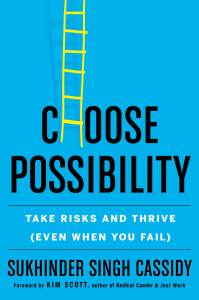News: Daily Crunch: T-Mobile confirms ‘highly sophisticated cyberattack’ affecting 47M customer accounts
Hello friends and welcome to Daily Crunch, bringing you the most important startup, tech and venture capital news in a single package.
To get a roundup of TechCrunch’s biggest and most important stories delivered to your inbox every day at 3 p.m. PDT, subscribe here.
Hello and welcome to Daily Crunch for August 18, 2021! Good news up top: A big welcome to Kate Park, who recently joined the TechCrunch family. She’s helping expand our coverage of Asia, with a special eye on South Korea. Make sure to follow her on Twitter and say hello.
Now let’s talk Apple and crypto and startups! — Alex
The TechCrunch Top 3
- Apple under fire: Apple’s not having the world’s best day, retreating on a controversial browser design choice while also coming under fresh criticism for its anti-CSAM system that, it turns out, suffers from hash collisions. Not sure what that means? Our own Zack Whittaker has you covered.
- Good news from crypto: In the wake of Coinbase’s direct listing, we’ve seen global venture capitalists invest in a number of crypto exchanges. Raising money is never a bad sign for any technology niche. But the good news from cryptoland is more extensive than just venture activity. TechCrunch explores.
- T-Mobile hacked: The possible T-Mobile hack that we shared in Daily Crunch recently is real — and impacts tens of millions of customers. As TechCrunch notes, this is the “fifth time that T-Mobile was hacked in recent years.” Not good.
Startups/VC
Our newest TechCruncher has been hard at work, which means we can highlight some of her reporting already. Here’s Park on South Korean secondhand marketplace Danggeun Market and its recent $162 million round that values the company at $2.7 billion.
Before we dive into the funding round rundown, Mayfield investor Navin Chaddha wants to know what happened to risky venture capital bets. His essay is a response to a particular piece from The Information. We’ve explored the concept before, but Chaddha’s notes are well worth reading.
Now, the rest of today’s key startup news:
- APIs are big business: So big in fact, that API-delivered startups aren’t the only companies raising money off the model of building developer-friendly services. Postman just raised $225 million at a $5.6 billion valuation to help other developers build APIs. So that other developers can more easily plug into technology products. Postman competes with Stoplight and Kong, among others.
- Worm protein cometh: Food tech is neat. Who doesn’t like that startups are working on all sorts of alternative proteins, right? Raising cows is trash for the environment, and we all know it. But what about insects? Beta Hatch just raised $10 million for its insect-focused protein work. Perhaps the future is crunchy.
- KaiPod bets on tiny schools: One piece of the 2020 and 2021 boom in edtech startup activity involves pods, or “micro-schools.” Per our own Natasha Mascarenhas, Boston-based KaiPod is betting that the model is here to stay and is focusing on the homeschool market to start.
- Middle-income fintech? One neat element of the world of fintech has been the use of financial technology to reduce the cost of financial services and bring more money-management tooling to underserved communities. One is not doing that. Instead, the company is building fintech for the middle class. The startup wants to build an “all-in-one” solution, Mary Ann Azevedo reports.
- Planning for a wet future: That’s what FloodMapp is doing, per Danny Crichton. The startup, based in Australia, “is aiming to wash out the old approaches to hydrology and predictive analytics and put in place a much more modern approach to help emergency managers and citizens know when the floods are coming.” Once you know what is coming, you can prepare, goes the idea.
- More venture wagers on no-code: The latest service hoping to take no-code app development mainstream is Stacker. You may have heard of them. Ron Miller reports that the company just landed $20 million from a16z in its Series A round. As with some other services, Stacker lets users turn spreadsheets into apps. (Some startups are taking the opposite approach, notably.)
- Today in great startup names, RaRa Delivery just raised $3.25 million. The Indonesian startup wants to bring same-day delivery to its home market. Sequoia Capital India’s Surge program and East Ventures led the round.
How to establish a health tech startup advisory board
Most startups could use an advisory board, but in health tech, it’s a core requirement.
Founders seeking to innovate in this area have a unique need for mentors who have experience navigating regulations, raising capital and managing R&D, to name just a few areas.
Based on his own experience, Patrick Frank, co-founder and COO of PatientPartner, shared some very specific ideas about who to recruit, where to find them and how to fit them into your cap table.
“You want to leverage these individuals so you are able to focus on the full view of the company to ensure it is something that both the market and investors want at scale,” says Frank.
(Extra Crunch is our membership program, which helps founders and startup teams get ahead. You can sign up here.)
Big Tech Inc.
- Twitter wants developers to build for its live-audio product: Twitter Spaces is no passing fad at the social media giant, it appears. Twitter is adding Spaces to its recently rebuilt API, allowing external developers to extend its capabilities. Frankly, we think Twitter Spaces are pretty neat, so this is a welcome piece of news.
- Amazon invests in India: In the form of a $40 million Series C for Bangalore-based financial services startup smallcase. When we think about tech megacompanies that are active investors, Amazon isn’t high on the list, making this transaction more notable than most corporate venture deals.
TechCrunch Experts: Growth Marketing

Image Credits: SEAN GLADWELL (opens in a new window) / Getty Images
TechCrunch wants you to recommend growth marketers who have expertise in SEO, social, content writing and more! If you’re a growth marketer, pass this survey along to your clients; we’d like to hear about why they loved working with you.
If you’re curious about how these surveys are shaping our coverage, check out this interview Anna Heim did with Ascendant co-founder Gus Ferguson and partner Alyssa Crankshaw, “For British agency Ascendant, growth marketing is much more than a set of tactics.”
Community
Join Danny Crichton on Thursday, August 19, at 2 p.m. PDT/5 p.m. EDT for a Twitter Spaces interview with Sukhinder Singh Cassidy, author of “Choose Possibility: Take Risks and Thrive (Even When You Fail).”
TechCrunch Disrupt 2021
It’s almost that time when startup followers from around the world gather at our annual conference, Disrupt, which will be held virtually again this year. Join the community September 21-23 to expand your horizons and your network with founders and CEOs of Coinbase, Dapper Labs, GitLab, Canva and more. Attend for less than $100, or you can get a free Innovator Pass if you are one of the first 10 people to register with promo code DAILYCRUNCHFREE. But you’ll want to hurry — it’s first come, first served, and once they’re gone, they’re gone!




